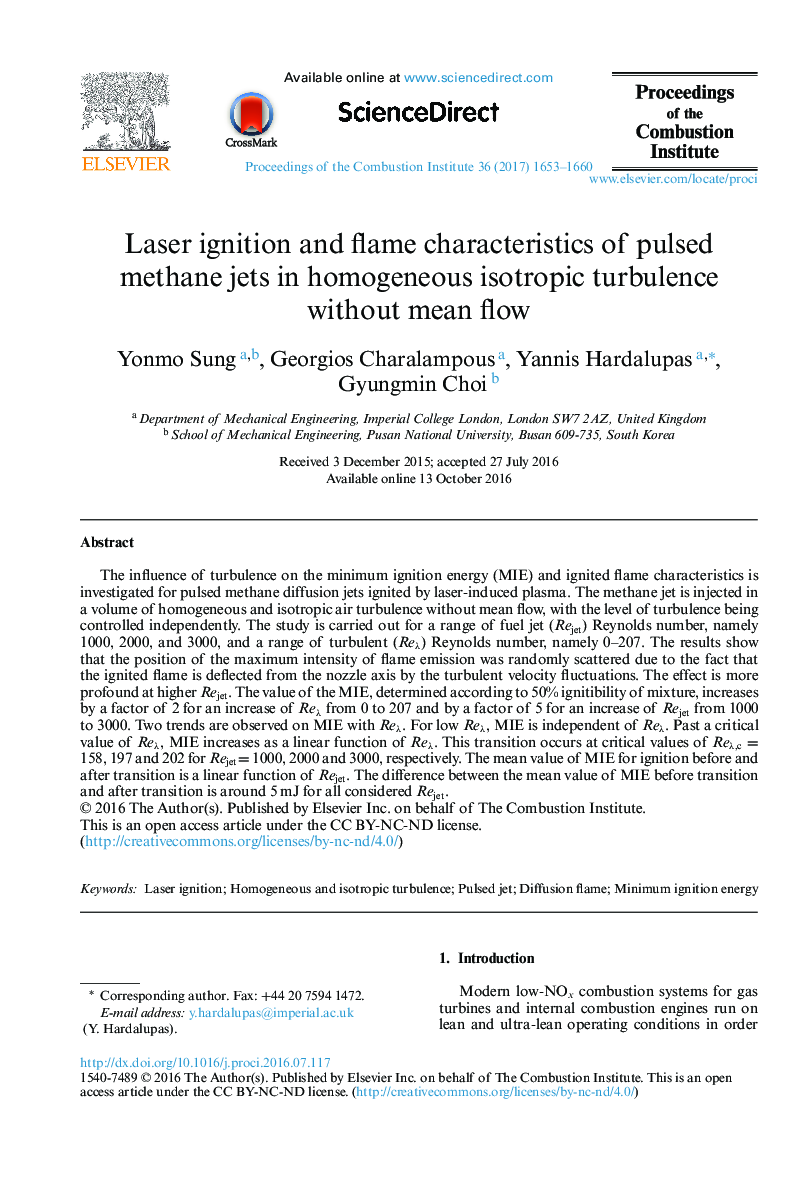| Article ID | Journal | Published Year | Pages | File Type |
|---|---|---|---|---|
| 6477937 | Proceedings of the Combustion Institute | 2017 | 8 Pages |
The influence of turbulence on the minimum ignition energy (MIE) and ignited flame characteristics is investigated for pulsed methane diffusion jets ignited by laser-induced plasma. The methane jet is injected in a volume of homogeneous and isotropic air turbulence without mean flow, with the level of turbulence being controlled independently. The study is carried out for a range of fuel jet (Rejet) Reynolds number, namely 1000, 2000, and 3000, and a range of turbulent (Reλ) Reynolds number, namely 0-207. The results show that the position of the maximum intensity of flame emission was randomly scattered due to the fact that the ignited flame is deflected from the nozzle axis by the turbulent velocity fluctuations. The effect is more profound at higher Rejet. The value of the MIE, determined according to 50% ignitibility of mixture, increases by a factor of 2 for an increase of Reλ from 0 to 207 and by a factor of 5 for an increase of Rejet from 1000 to 3000. Two trends are observed on MIE with Reλ. For low Reλ, MIE is independent of Reλ. Past a critical value of Reλ, MIE increases as a linear function of Reλ. This transition occurs at critical values of Reλ,c = 158, 197 and 202 for Rejet= 1000, 2000 and 3000, respectively. The mean value of MIE for ignition before and after transition is a linear function of Rejet. The difference between the mean value of MIE before transition and after transition is around 5 mJ for all considered Rejet.
